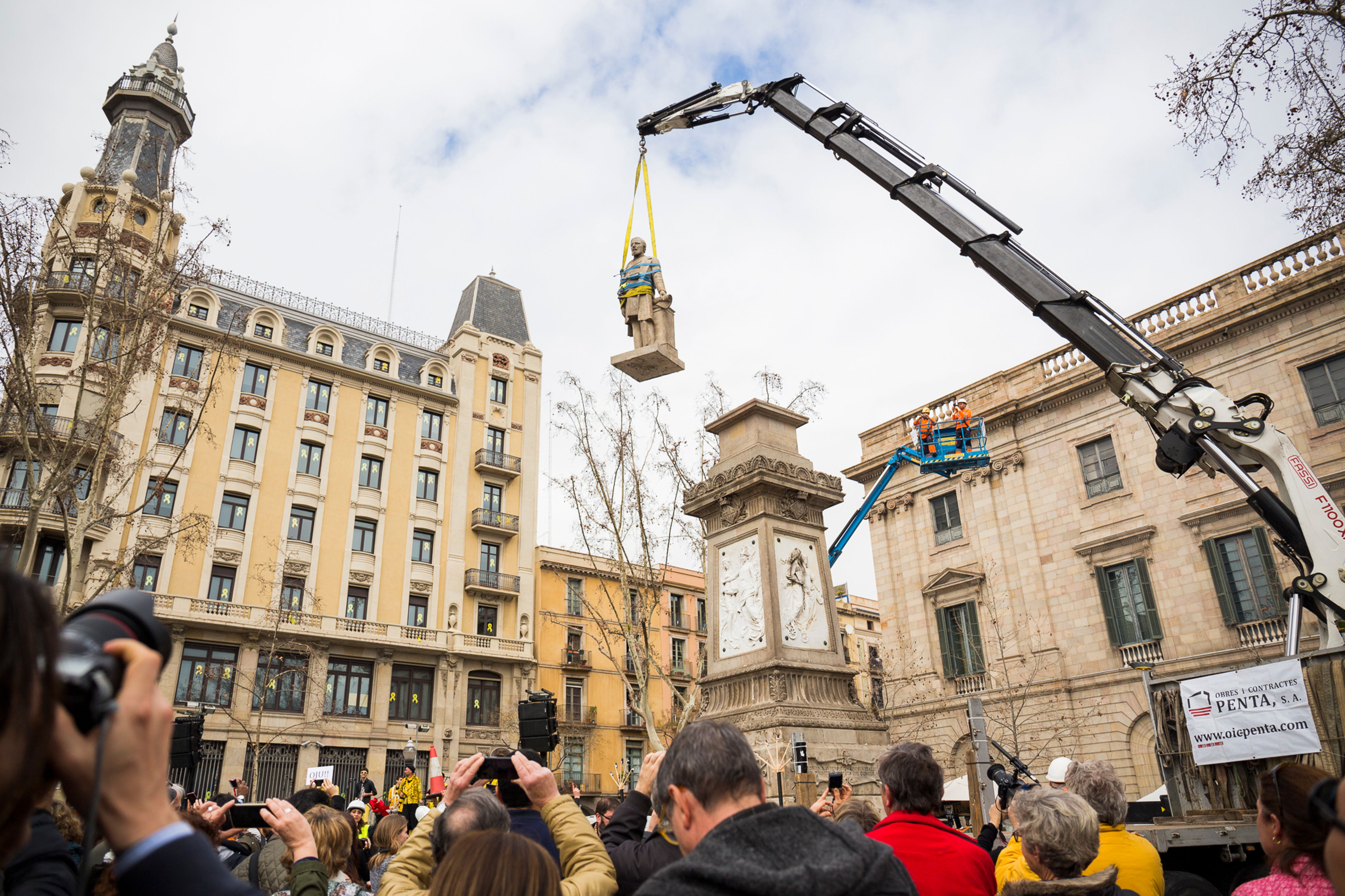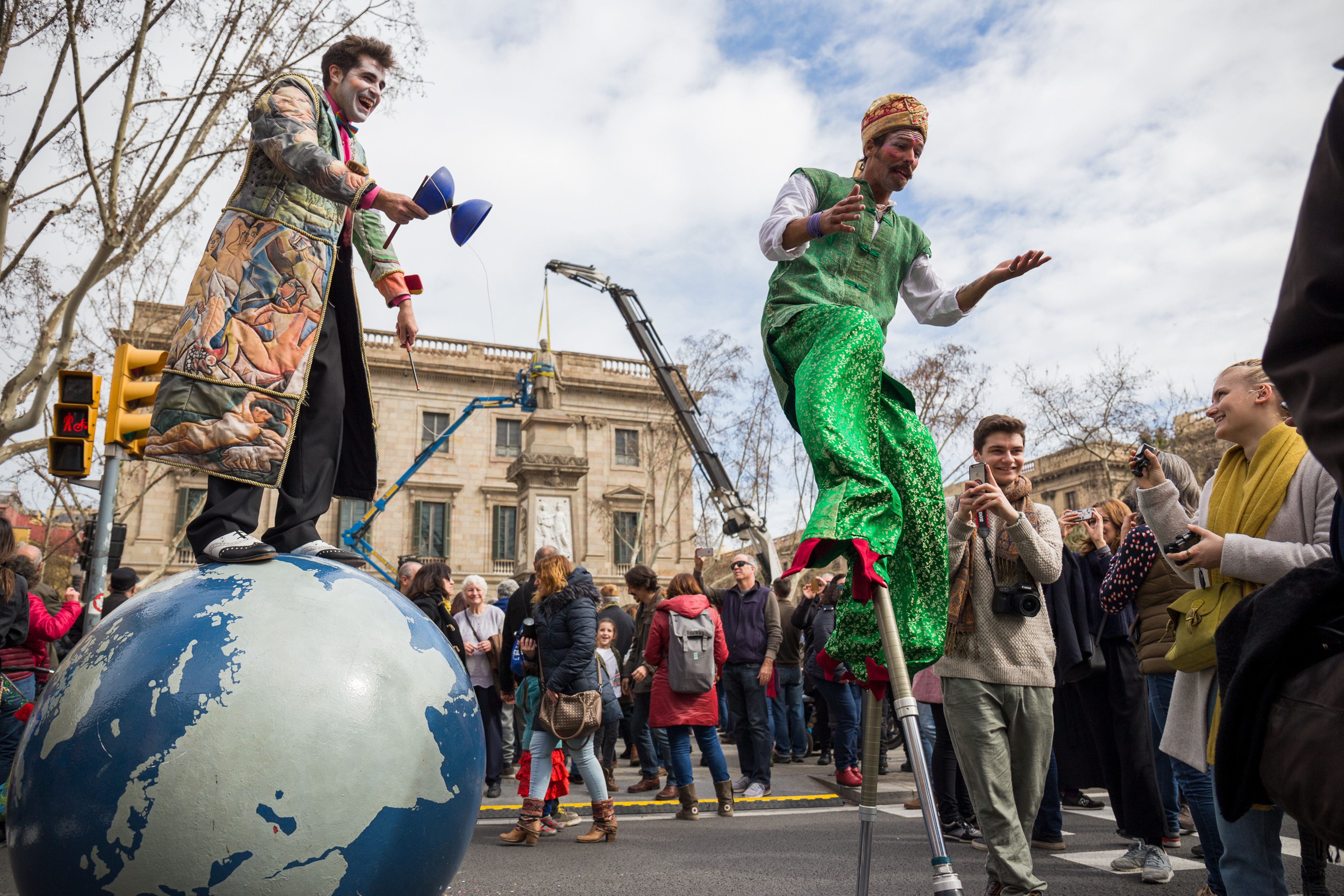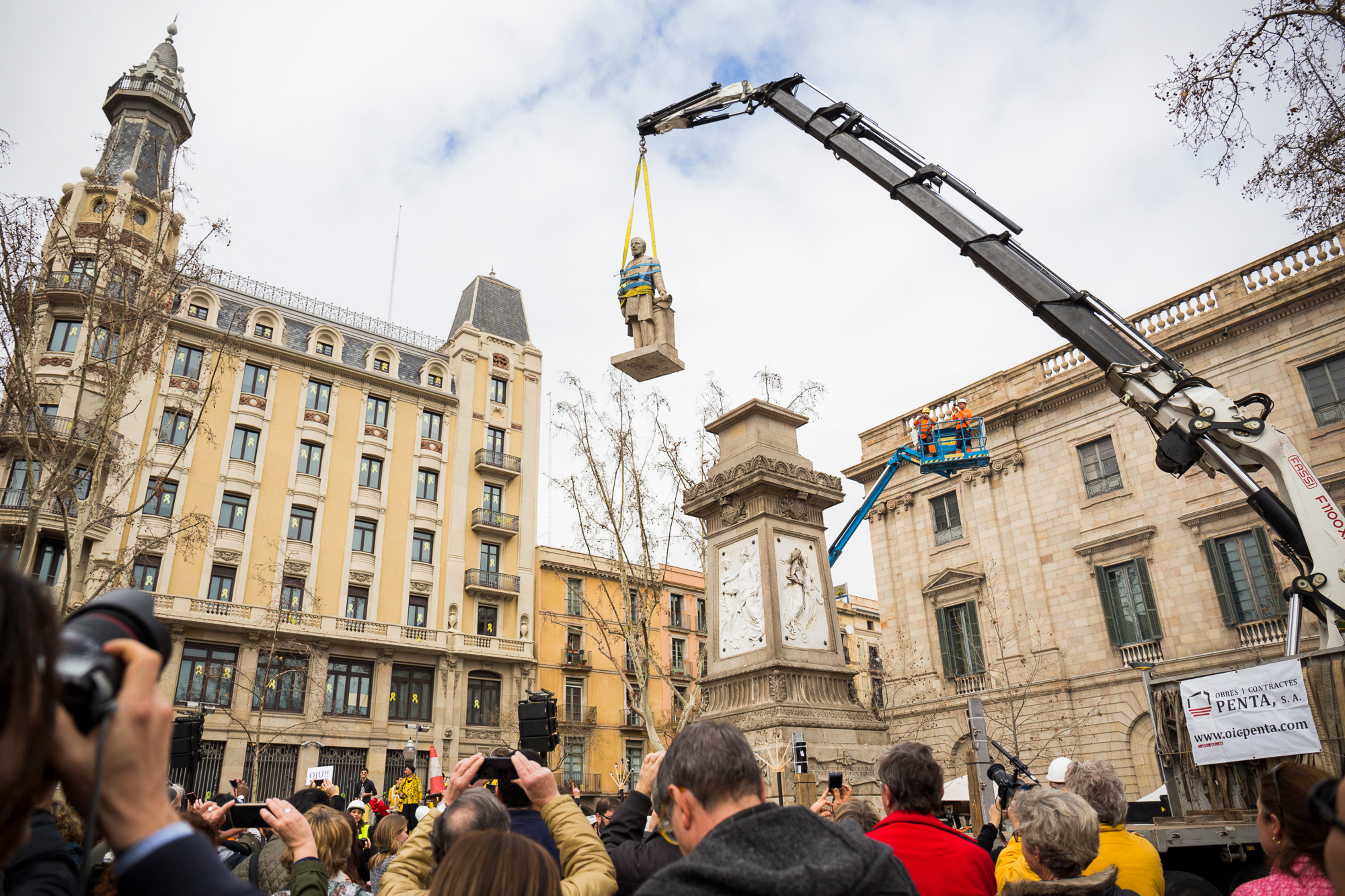Barcelona removes slave trader statue
Antonio López i López made much of his fortune through slave trafficking in Cuba

Dealing with historical memory is seen as an important issue in Catalonia. Usually, this term refers to facing the horrors of the Spanish Civil War – but this week, Barcelona included removing a slave-trader statue into this effort.
On Sunday, a statue of Antonio López was removed by the central Via Laietana avenue. This happened amid an environment of festivities, with fireworks and performers, organized by the Barcelona City Council and put on by the Comediants troupe.

Wealth from slaves
Antonio López i López was a Spanish marquis and a well-known businessman who died in Barcelona in 1883; his wealth, however, was also obtained through dealings with the slave trade in Cuba, where he lived for 25 years. Thanks to his involvement in the trafficking of slaves, he founded the Banco Hispano Colonial, the Companyia General de Tabacs de Filipines and the Companya Translatlantica del Vapor.

The statue was erected one year after López’s death, and was kept up until now, with the exception of a brief moment during the Second Republic. Several social platforms have been requesting the statue be removed for several years, including anti-racism media platform Metromuster.
An ongoing effort
The battle may be won, though, but the war to remove references to a slave-trader from the streets of Barcelona is still ongoing. The square in which the main city post office is situated is still named after the trafficker, and many organizations are fighting to have the name changed, with one suggestion being Idrissa Diallo, who died in a Center for the Internment of Foreigners (CIE) in the city.